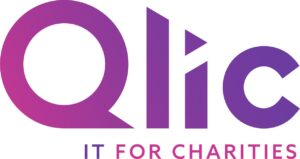Digital transformation is vital for organisations across all sectors, including the charity sector. As technology continues to evolve rapidly, charities must embrace digital in order to remain effective and efficient. However, venturing on a digital transformation journey is not without its challenges. Charities must take a strategic approach to avoid risks and maximise the benefits.
In this blog post, we delve into the essential strategies for successful charity digital transformation. And you might also benefit from reading our blog which addresses the question: why is digital transformation important for charities?

Understanding Charity Digital Transformation
Digital transformation is the adoption and integration of digital technologies to modernise a charity’s current infrastructure. This transformation goes beyond upgrading IT systems. It involves a fundamental shift in a charity’s culture, processes, and strategies.
Embracing digital technologies is becoming increasingly crucial for charities. It can enhance operational efficiency by automating tasks, facilitating data management, and streamlining workflows. Digital technologies can also help to transform fundraising practices. This enables charities to reach a wider audience, enhance online donations, and create more engagement.
According to the Charity Digital Skills report 2023, 79% of charities are prioritising improvements to their website, online presence, or social media this year. Meanwhile, 59% are focusing on enhancing their digital fundraising. These statistics highlight the growing recognition among charities of the need to digitally transform their current infrastructure.
The Must-Do’s of Charity Digital Transformation
Digital transformation is a process that requires planning, strategic decision-making, and continuous learning. Here are the essential steps and strategies that small charities need to consider for a successful digital transformation:
Assessment and Planning: The first step in any digital transformation is conducting an assessment of your current digital services and environment. This will help you identify gaps and areas for improvement. Based on this, your charity can then develop a well-defined charity digital strategy that aligns with your mission, goals, and resources.
Engaging Stakeholders: It’s important to communicate to all stakeholders, including staff, volunteers, and beneficiaries, during the digital transformation process. Their input will help to identify needs and current challenges, ensuring the successful implementation of new digital initiatives. Transparency, communication and collaboration are key during this stage.
Investing in Training: As the digital landscape continues to evolve, it is important to make sure your staff evolve with this. Investing in training will aid continuous learning and build digital literacy within your organisation. Providing your team with the necessary digital skills will enable them to leverage new technologies confidently.
Selecting the Right Tools: It’s important to select technology solutions that are tailored to your charity’s goals, needs, and resources. Companies like Qlic can provide expertise in this area, helping you navigate the vast landscape of digital tools and find the best fit for your organisation. This can include everything from having the right internet connection to choosing the right cloud solutions for your charity.
Data Management: Data security is paramount. Charities must ensure they are compliant with all data protection regulations, including GDPR. This involves implementing robust data security management, such as data collection, storage, and processing. Understanding the principles of data protection and charities is essential to safeguarding your charity’s data.
Measuring Impact: It’s important to set key performance indicators (KPIs) and measure the impact of your digital initiatives before and throughout the process. Digital transformation is a constantly evolving journey, so regular impact measurement and evaluation are crucial for ensuring your digital efforts deliver value.
Common Pitfalls to Avoid
Navigating your charity’s digital transformation can have some potential downsides. Here are some common pitfalls that small charities should avoid to ensure a successful digital transformation:
Lack of Clear Strategy: Unclear goals and objectives are one of the main reasons why digital transformations fail. Without having a well-defined strategy can lead to confusion, wasted resources, and missed opportunities. It’s crucial to develop a clear charity digital strategy that outlines your charity’s digital objectives.
Resistance to Change: Change can be unsettling and nerve-racking for an organisation, this can often lead to resistance from staff or leadership which can delay progress. It’s important to encourage an inclusive and supportive culture that embraces change and encourages continuous learning.
Ignoring Cybersecurity: Cyber security is a must-have during this digital age. Charities must ensure they have robust cyber security measures in place to protect their data. If you ignore cyber security regulations, this can lead to data breaches, reputational damage, and even legal issues. Understanding the principles of cyber security for charities is essential to safeguarding your charity’s digital assets.
Budget Constraints: Will the cloud save my charity money? While budget constraints are a common concern for charities, there are several cost-effective solutions available. Instead of investing in bespoke solutions, charities can consider adjusting to out-of-the-box solutions, which are often more affordable.
Overlooking User Experience: Digital transformation should not only focus on implementing new digital tools but also on enhancing the user experience. Overlooking this can lead to low adoption rates and understanding among your users. With any process you’re digitally enhancing, ensure that your digital platforms are user-friendly, accessible, and responsive.
Charity Digital Transformation Success Stories
At Qlic, we’ve had the opportunity to help implement many digital transformations for charities across the UK. Beacon Family Services is a great example that we most recently completed. Beacon Family Services approached Qlic with significant challenges in its IT infrastructure.
The existing setup, developed without a cohesive strategy, lacked consistency, making it difficult to onboard new users effectively. Additionally, the absence of external IT support further compounded the challenges, impacting Beacon Family Services’ ability to serve its beneficiaries efficiently.
Qlic was here to help address Beacon Family Services’ IT challenges. We implemented a strategic plan to modernise and streamline their IT infrastructure. This included migrating to Microsoft SharePoint 365 and Microsoft Exchange Online, enrollment in Microsoft Intune, as well as ongoing IT Support. The transformation of Beacon Family Services’ IT infrastructure was everything they hoped for and more!

Closing Thoughts on Charity Digital Transformation
To conclude, while digital transformation may seem daunting, it’s an essential process for charities to modernise their solutions. A successful transformation requires a clear strategy, stakeholder engagement, continuous learning, and the support of an IT solutions partner. Working with an IT solutions partner can significantly simplify digital transformations. They will help to navigate the vast landscape of digital tools, select tailored solutions for your organisation, and implement them effectively. They also provide ongoing support as well as provide helpful information on cyber security, data protection, and training.
Are you looking for trustworthy IT support and solutions to guide you through your charity’s digital transformation? We have decades of experience in the charity sector and are here to help! Book your complimentary Digital Transformation Consultation below.






